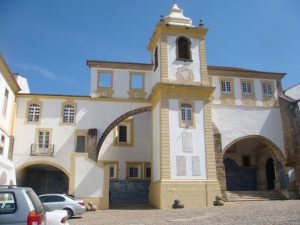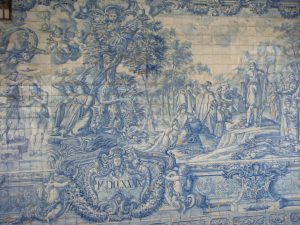
Portalegre – The origins of the city
When the kingdom of Portugal was formed, in the XII century, it is likely that in the valley that separates Penha de S. Tomé (Serra da Penha) from Cabeça do Mouro, there were houses that offered refuge and supplies to those that travelled through these lands. In this place of passage (porto), situated in a green and pleasant (joyful) region, the number of houses grew steadily constituting the city of Porto Alegre, which later became known as Portalegre.
Historical documents show that in 1229 Portalegre was a town of the council of Marvão and that in 1253 it was already the main town of the council.
 The 1st “foral” (town chart) was attributed by D. Afonso III in 1259. This monarch ordered that a fortress be built, but it was left incomplete. In 1271 D. Afonso III donated the towns of Portalegre and Marvão, and the manors of Vide and Arronches, to his second son, the infante D. Afonso.
The 1st “foral” (town chart) was attributed by D. Afonso III in 1259. This monarch ordered that a fortress be built, but it was left incomplete. In 1271 D. Afonso III donated the towns of Portalegre and Marvão, and the manors of Vide and Arronches, to his second son, the infante D. Afonso.
When D. Afonso III died, in 1279, the infante D. Afonso tried to succeed the throne claiming that his brother D. Dinis was an illegitimate son. This pretense wasn’t taken seriously but it gave origin to disagreements between the brothers.
Portalegre was involved in this squabble and, in 1299, it was surrounded by D. Dinis. Portalegre remained surrounded for five months, until the surrender of D. Afonso. It is important to mention that D. Dinis surrounded the walls that he himself had ordered to be built in 1290. In fact, during this year, the king remodeled the alcazaba and the marble keep and built a second fence of which several parts still exist today.
It is thought that the tower, or watch-tower, that dominates the city, known by the name “Atalaião”, was built before the fortification of D. Afonso III.
In 1299 D. Dinis gave Portalegre the privilege of not being able to become the possession of a town lord “nor of an infante, nor of a rich man, nor of a rich-lady, but to be land of the King and his first heir”.
 When king D. Fernando died, in 1383, D. Leonor became regent until her daughter was ready for succession and, consequently, D. João I of Castille, the husband, fact that would bring the loss of independence.
When king D. Fernando died, in 1383, D. Leonor became regent until her daughter was ready for succession and, consequently, D. João I of Castille, the husband, fact that would bring the loss of independence.
These events caused a division in the portuguese nobility: most of the nobility took the side of D. Leonor, while others followed the Master of Aviz, namely Nuno Álvares. At this time, D. Pedro Álvares Pereira, Prior of Crato and brother of Nuno Álvares, was mayor of Portalegre and a strong supporter of D. Leonor. The mother of the Álvares Pereira, Fria Gonçalves, also lived in this town. In face of the positions taken by the mayor, the people of Portalegre revolted and surrounded the castle. As a consequence D. Pedro ran to Crato.
The ex-mayor would eventually die in 1395, in the battle of Aljubarrota, while fighting alongside Castille.
Meanwhile, the town kept becoming more important and, in 1549, through the workings of D. João III, pope Paul III sent a papal bull to create the new diocese of Portalegre (until then the town was integrated in the diocese of Guarda). In 1550, D. João III wrote the royal letter that elevated Portalegre to the category of city.
This benefit was not fortuitous. It should be mentioned that Portalegre was, together with Estremoz and Covilhã, one of the main centers of the portuguese fabric and textile industry and that taxes over jewish possessions was higher than those in Porto and only lower than those in Lisbon, Santarém and Setúbal.
(text written by Prof. Doutor António Ventura)